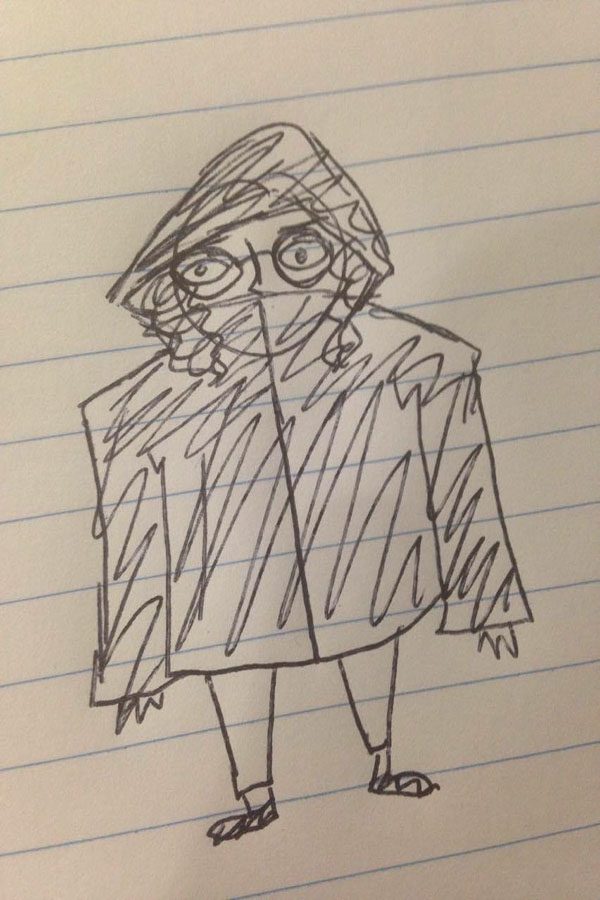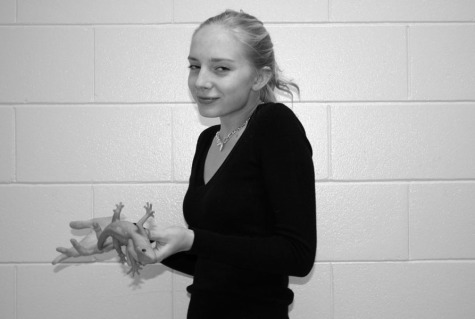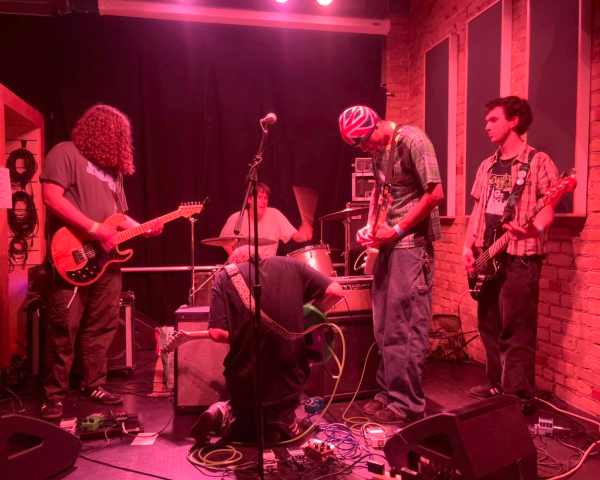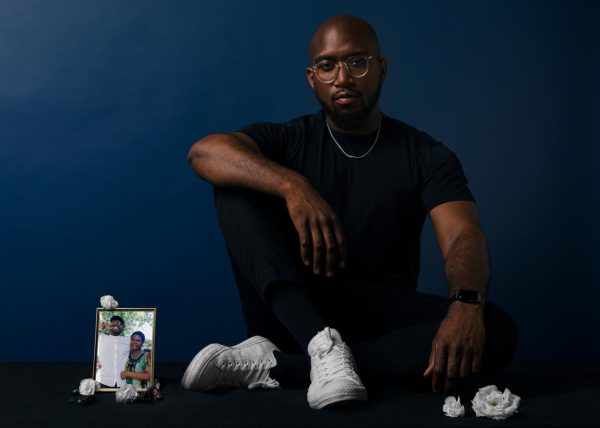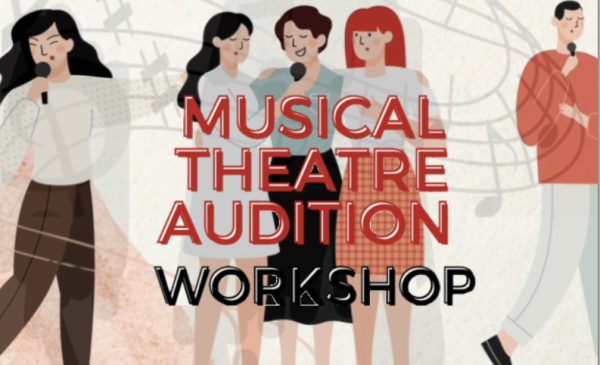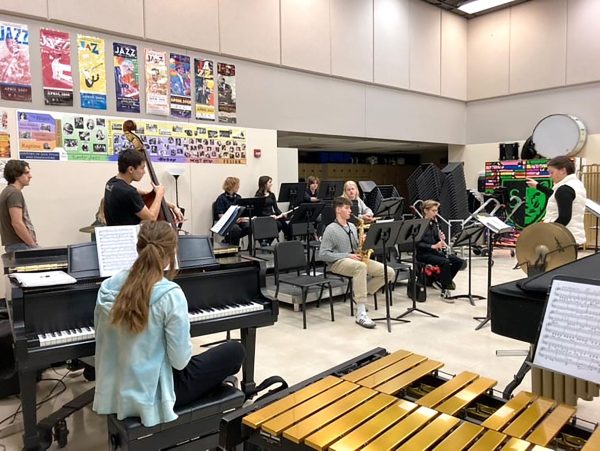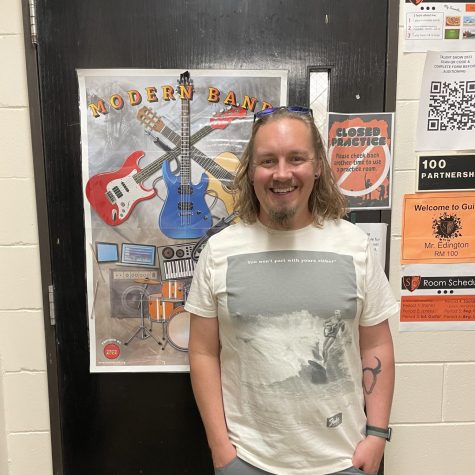When talking doesn’t work, turn to art therapy
Elise Gumm, senior, uses doodling as a way to focus and clam herself. She says, “Doodling, i do that a lot on test and other things just to focus. It’s really hard for me to focus on other things without having something to draw on.” Doodling and other forms of art help ease anxiety and can help combat depression.
June 2, 2016
“Usually it’s incorporated because someone says ‘I want help but I don’t know how to say what I need.’ Or ‘I don’t feel comfortable saying what’s going on, or there’s so much going on that I can’t put words on it,’” described Wendy Schultz as we sat talking in a quiet, dim office in the Lowry Hill Psychotherapy and Assessment Center.
Schultz is a psychotherapist at Lowry Hill but she does therapy in a unique way: through art. Art therapy is a practice that uses art techniques to help people express themselves and explore internal struggles. Schultz said, “Art therapy is using a variety of different mediums to be able to express oneself and to be able to explore oneself. It’s a way for me as the therapist to be able to see and interpret what’s going on in a different way.”
Art therapy can be used by anyone, but for teenagers, art therapy can be extremely effective. Whether you have a mental disorder, past traumas, or something else going on, Schultz says that art therapy can help patients express and release their emotion. She said, “I got into it because I started working with tweens and teens, and talk just doesn’t really work.”
For Schultz and her clients, she begins the sessions with discussing whatever subject they want to address and then moves on to work with whatever medium they are using. In art therapy, “The client has more autonomy or alone time in a way. It’s not a back and forth between the therapist and the client, but the majority of the hour they have their own space and their own time.”
Art therapy can look different for everyone, whether it be for people who reach out to therapists for help or for people looking to help themselves on their own.
Nahal Javan, a senior at South, has played trumpet since 4th grade and has found a sense of home within her music. As well as trumpet, Javan plays the french horn, and has been a part of the jazz band at South for four years.
She said, “During my sophomore year, I really saw music as something I wanted to stay in. I have really traditional parents who aren’t from America, so their ideas of going to college were way different than [mine were]. Music became like a family for me, where I could be myself.”
“Music makes me feel like I have this connection to something bigger and it allows me to connect with other people not vocally, but through an emotion that you get through playing a piece,” said Javan. She has learned a lot from music, especially how to view the world in a broader, more inspiring way. She says it’s taught her how important it is to have a voice, and to have your voice heard.
Theater and performing arts make senior Elise Gumm feel similar to Javan. Gumm has been participating in performing arts since preschool but has started benefiting from it therapeutically this past year. They explained, “It’s nice to be around other people creatively. I think that theater is really cool to encompass a lot of the other kind of arts and artistic modes.”
Theater, as well as other forms of art, have helped Gumm combat depression and anxiety. Gumm had also been engaging in Dialectical Behavior Therapy or DBT, which emphasized a lot of the same themes that being in theater had shone them.
Themes such as being in the moment to cope with certain feelings were a part of DBT therapy, but also in theater. They said, “[Theater] emphasizes a lot of mindfulness techniques, like being in the moment and not focusing on other things, which can really reduce anxiety and other negative thought.”
Schultz discussed a lot on how art is such a beautiful emotional release for people and great stepping stone for moving beyond destructive habits. Gumm finds this true within her own art.“Art is not necessarily only an escape or a release from negative things in life or as a coping mechanism but it can also be a positive force in creating something beautiful.”
“It’s so hard with how society has constructed itself where everyone is so busy all the time, it’s hard to just slow down and be in the moment,” Schultz said. She says that art can be used to make connections between parents and children, between herself as a therapist and the client, but it’s evident that the most important connection is between the person themselves.

